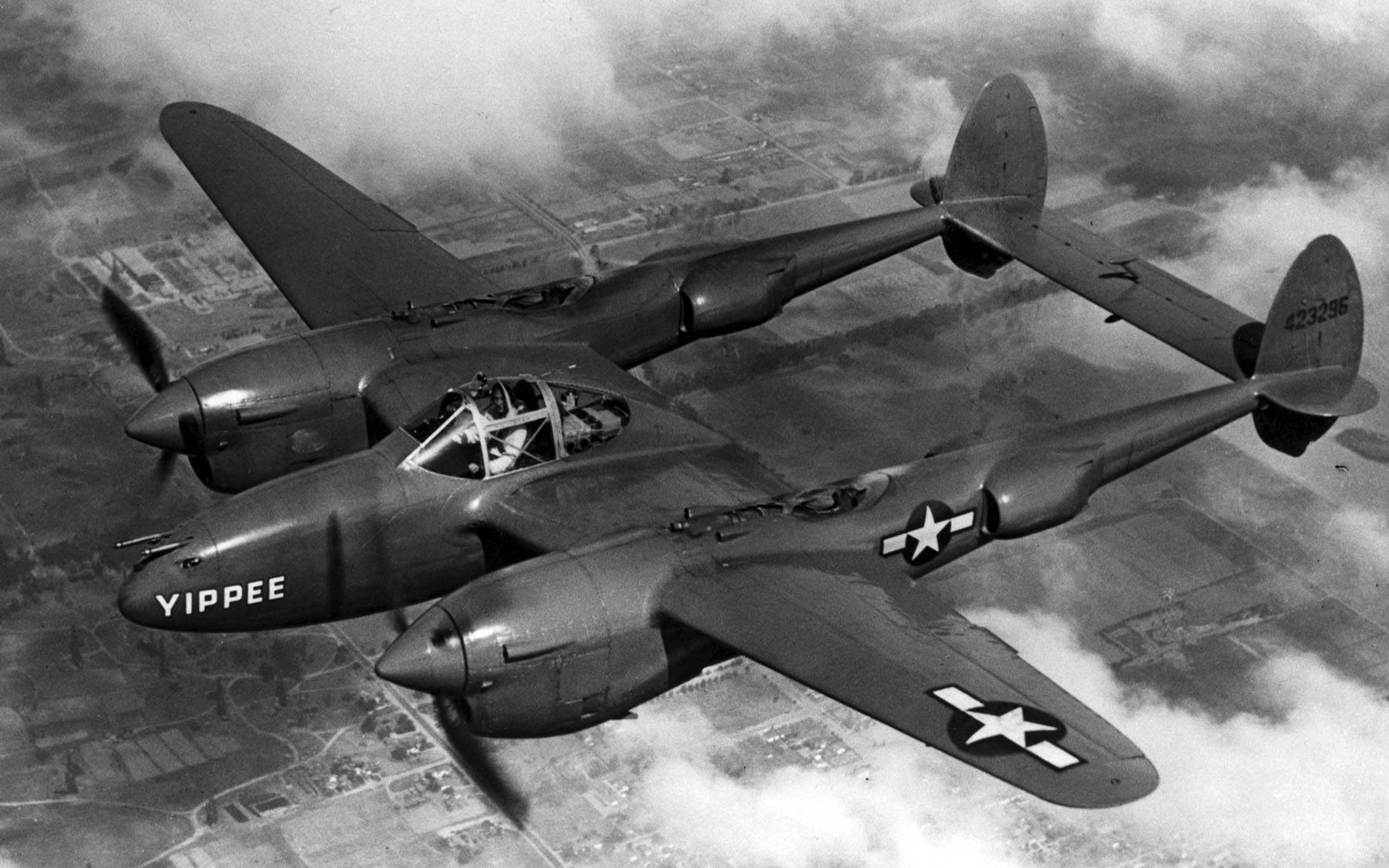
The Lockheed P-38 Lightning was definitely not a common fighter; it was essentially a departure from the past. The P-38 combined state-of-the-art engineering with its raw combat efficiency in a manner that no other WWII plane had. It is the tale of defying norms, learning harsh lessons, and leaving a legacy still recognized and praised by aviation historians and enthusiasts today.

The U.S. Army’s request in 1937 was for Lockheed to build an interceptor that was not only quick and able to climb sharply but would also have a strong impact and perform well at a high altitude. Kelly Johnson and Hall Hibbard did not simply adjust the already available fighters to meet the requirements; rather, they started from scratch. The result was an unprecedented sky creation, namely a twin-engine, twin-boom aircraft with tricycle landing gear.

It also carried one 20mm cannon and four .50 caliber machine guns in its nose, which made a perfect combination of high-precision fire and no aiming trouble, as in the case of wing-mounted weapons. Besides giving the aircraft extra speed and safety, the counter-rotating design of the two engines also canceled torque, thus making the Lightning very stable. Mary Golda Ross, one of the first Native American women engineers, who later became part of Lockheed’s highly classified projects, was among the team that worked on the design.

It was natural that with such a radical machine, the problems came. Pilots of the era could not operate the Lightning easily. The systems were complicated, the emergency procedure was tricky, and the speed demanded constant attention. Several fatalities in training happened early on, and even the ground crew had to go through a steep learning curve. At the beginning, the fighter had difficulties with fuel, heating, and twin-engine tactics in Europe. However, the engineers at Lockheed and American crews were persistent, and they worked on the problems one by one until the P-38 started showing its great potential.

The first battle experience of the Lightning was in 1942 when it reached the U.S. Army Air Forces’ first air-to-air victory over Iceland. Consequently, it was actively engaged in fighting in North Africa and the Mediterranean with German fighters like the Bf 109. However, the P-38 really made its mark in the Pacific, long tracts of the sea.

Long distance and heavy fire made it perfect for island-hopping campaigns, which could escort bombers taking enormous routes, fight against agile Japanese fighters, and still be able to return on a single engine if necessary. Richard Bong and Thomas McGui, flying the P-38, were able to shoot down a lot of opponents, thus proving that the fighters of the war would be a good match. The person who recalled the turning advantage due to its unconventional design while fighting against the likes of the Ki-43 Oscar was John A. Tilley, who flew the aircraft in combat.

One of the P-38’s most famous missions was Operation Vengeance in April 1943. By U.S. codebreakers understanding Admiral Isoroku Yamamoto’s flight plans, only the Lightning was capable of accomplishing the task due to its range. American pilots went hundreds of miles over water in the middle of the night, engaged the mastermind of Pearl Harbor’s attack, and shot him down. The operation was at once a powerful blow on Japan’s morale and a dramatic demonstration of the P-38’s abilities.

However, behind every aircraft are the people who operate them. The Lightning required mastery of both talent and courage from its pilots. Some sacrificed their lives for their wingmen, while others, such as Charles Lindbergh, trained combat pilots on fuel-saving methods that lengthened the already impressive range of the plane.

The narrative of the 82nd Fighter Group squadron’s fellowship is not overshadowed by technology. On the contrary, it is a reminder that the Lightning’s history is as much a tale of human bravery as it is of the machinery.

More than 10,000 Lightnings had been built by the time production was halted. They conducted over 130,000 sorties and had the highest number of aerial plane kills in the Pacific compared to other U.S. fighter planes. Besides the fight, the P-38 was also the main reconnaissance aircraft providing most of the photographic intelligence that had influenced the war in Europe. Its nose-mounted firepower, twin engines, and forward-thinking landing gear were some of the primary features in many subsequent fighter designs.

The P-38 Lightning was definitely not just an aircraft; it was a representation of what veterans with daring engineering and determined pilots could accomplish. The test pilot Colonel Ben Kelsey once said of the Lightning, “It would fly like hell, fight like a wasp upstairs, and land like a butterfly.” The combination of these elements – speed, power, and grace – showed exactly why the Lightning became so famous, and, to this day, its spirit is also felt by the fighters that came after it.
